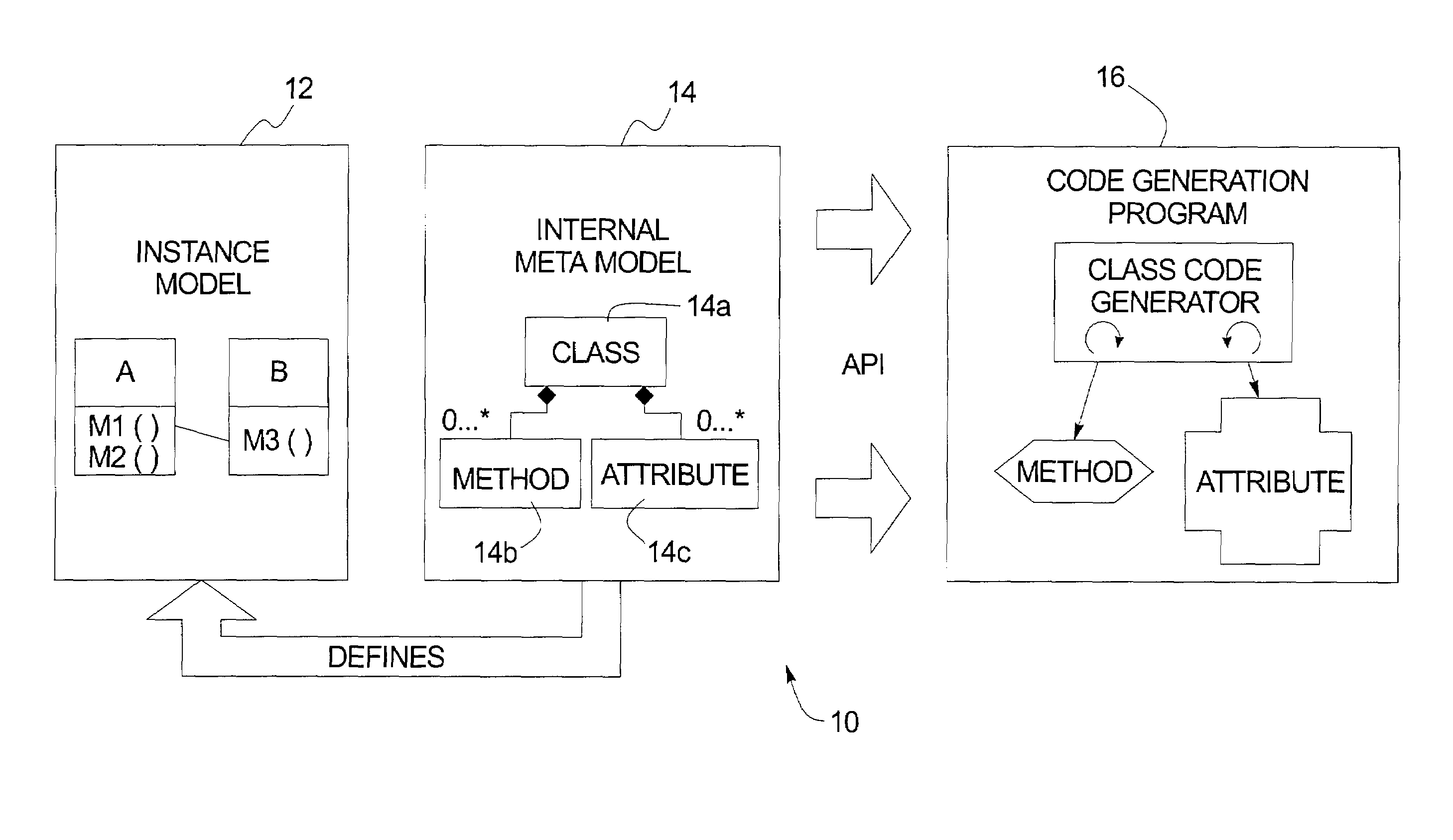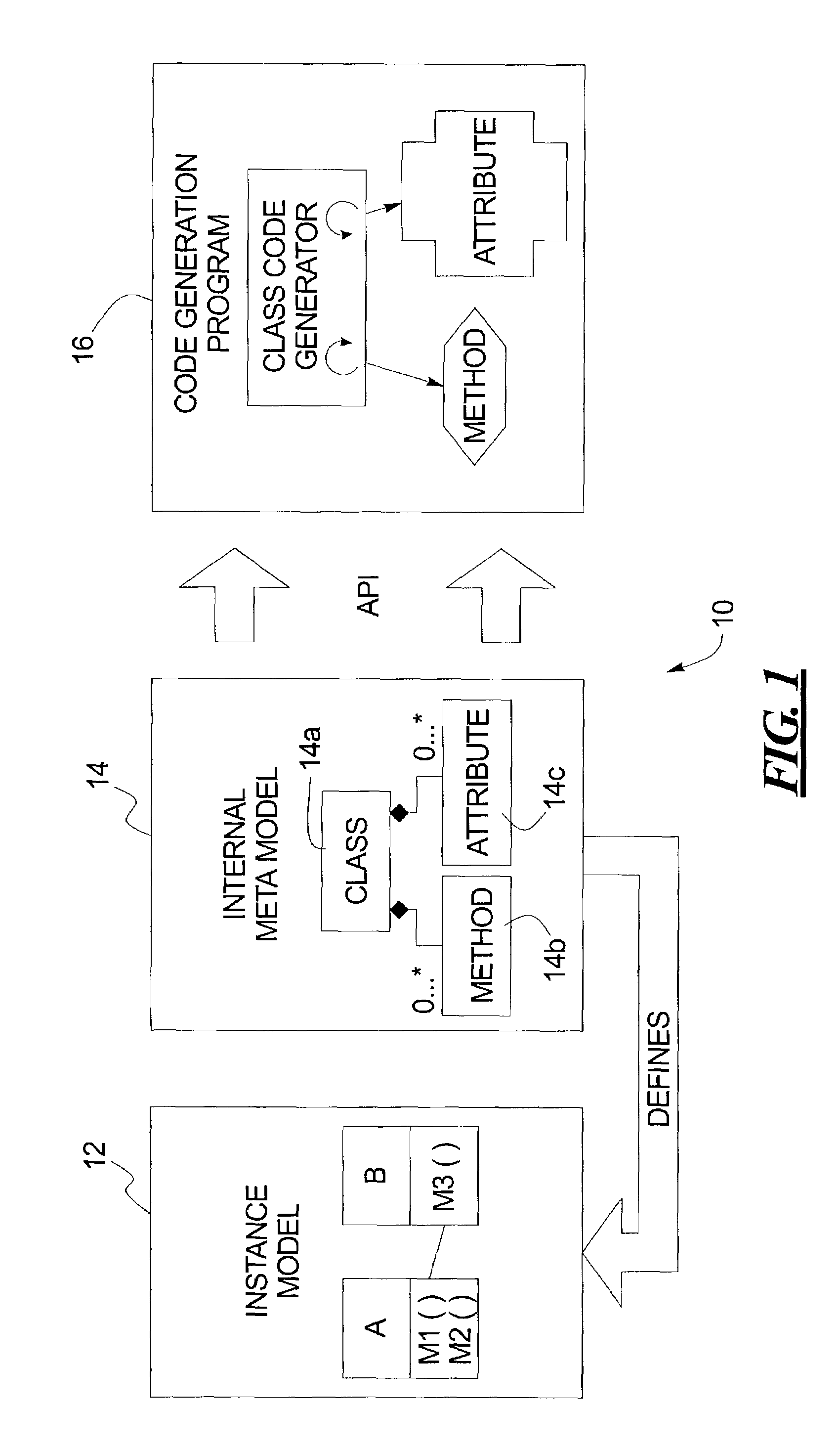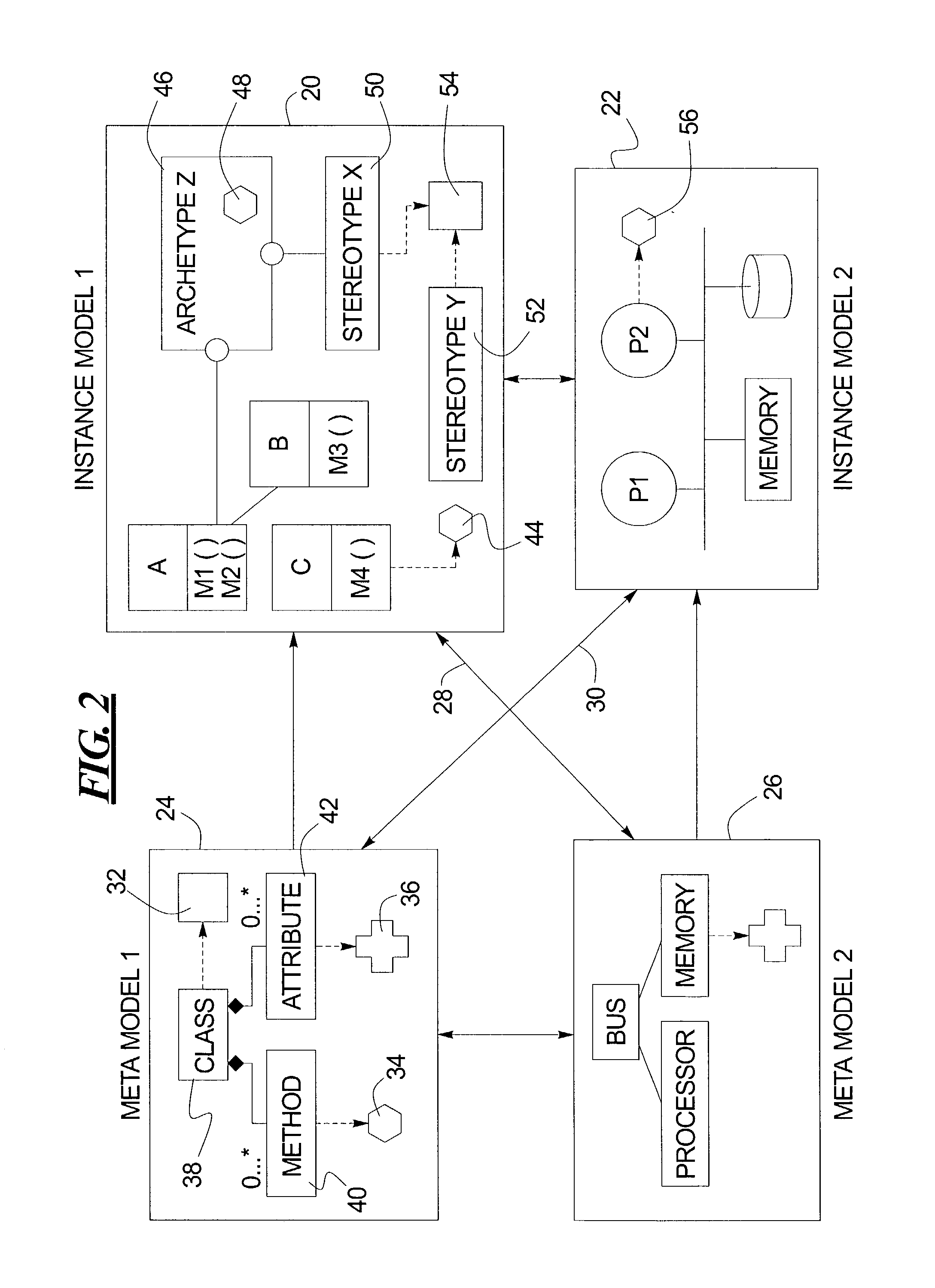Model-based composable code generation
- Summary
- Abstract
- Description
- Claims
- Application Information
AI Technical Summary
Benefits of technology
Problems solved by technology
Method used
Image
Examples
Embodiment Construction
[0032]An embodiment of the present invention involves a novel framework for generating code and other artifacts and is referred to herein as model-based composable code generation. According to this framework, code generators are composed of modular entity-specific code generator routines that are attached directly to graphical modeling entities or the meta data of the model-based entities or a collection of modeling entities. The attachment may be implemented as calls to the code generator routines that are embedded in the graphical modeling entities, as URL or other links or paths from the graphical modeling entities to the code generator routines, etc. Attaching a routine to a meta-entity in effect attaches it to all instances of that entity type in all instance models that conform to the modeling notation. Attaching a routine to a collection of modeling entities in effect attaches it to all of the individual modeling entities or meta-entities that make up the collection. Also, a...
PUM
 Login to View More
Login to View More Abstract
Description
Claims
Application Information
 Login to View More
Login to View More - R&D
- Intellectual Property
- Life Sciences
- Materials
- Tech Scout
- Unparalleled Data Quality
- Higher Quality Content
- 60% Fewer Hallucinations
Browse by: Latest US Patents, China's latest patents, Technical Efficacy Thesaurus, Application Domain, Technology Topic, Popular Technical Reports.
© 2025 PatSnap. All rights reserved.Legal|Privacy policy|Modern Slavery Act Transparency Statement|Sitemap|About US| Contact US: help@patsnap.com



